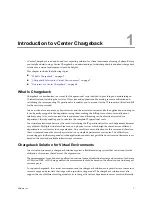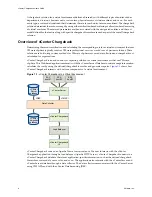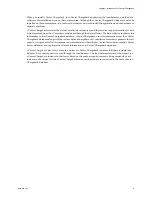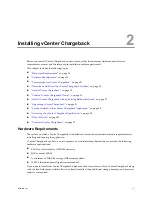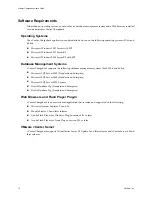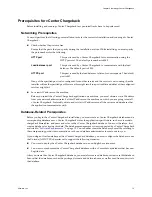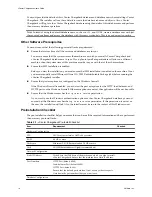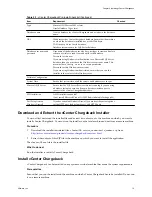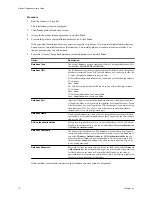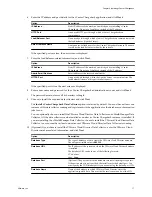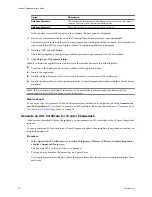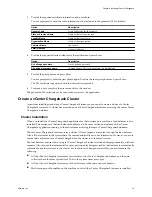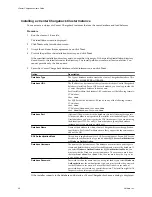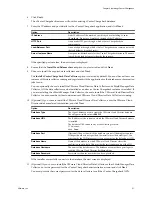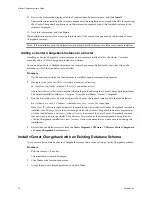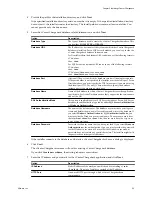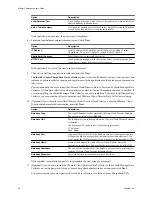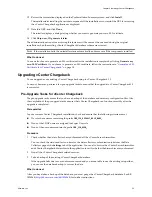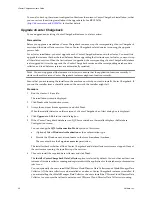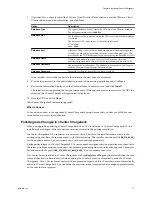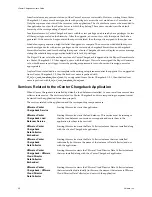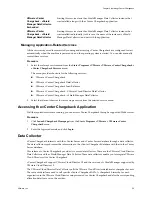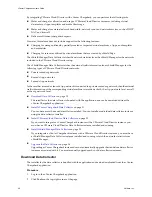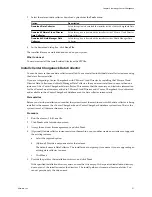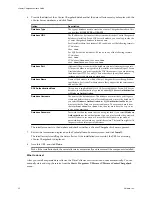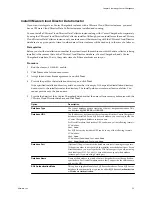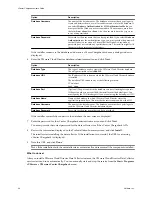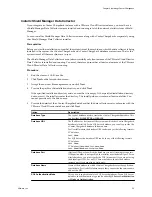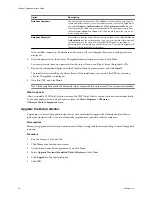
6
Click Use it.
The vCenter Chargeback instance will use this existing vCenter Chargeback database.
7
Enter the IP address and port details for the vCenter Chargeback application, and click Next.
Option
Description
IP Address
Static IP address of the machine on which you are installing vCenter
Chargeback. Do not use
localhost
instead of the IP address.
HTTP Port
An unused HTTP port through which vCenter Chargeback can
communicate.
Load-Balancer Port
An unused port through which vCenter Chargeback can communicate with
the load balancer (Apache Server).
Server Instance Name
A unique user-defined name for the vCenter Chargeback instance. This name
is used by the load balancer to identify the instance.
If the specified ports are free, the next screen is displayed.
8
Ensure that the Install Load Balancer Server option is not selected, and click Next.
9
Choose to install the required data collectors and click Next.
The Install vCenter Chargeback Data Collector option is selected by default. You must have at least one
instance of this data collector running and registered with the application for the database synchronization
jobs to run.
You can optionally choose to install the VMware Cloud Director Data Collector and vShield Manager Data
Collector. All the data collectors can be installed even after a vCenter Chargeback instance is installed. If
you are installing the vShield Manager Data Collector, choose to install the VMware Cloud Director Data
Collector too or ensure that at least one instance of VMware Cloud Director Data Collector is running.
10 (Optional) If you chose to install the VMware Cloud Director Data Collector, enter the VMware Cloud
Director database-related information, and click Next.
Option
Description
Database Type
The type of database used to create the VMware Cloud Director database.
The only permissible value is
ORACLE
.
Database URL
The IP address of the system on which the VMware Cloud Director database
is installed.
The database URL can be in any of the following formats:
IP Address
Host Name
Database Port
(Optional) The port on which the database service is listening for requests.
If the port number is not specified, the installer uses the default port. You
must specify the TNS listener port if you are not using the default port 1521.
Database Name
Name of the database in which VMware Cloud Director stores the
application-specific data. This must be the service name and not the SID.
Database Username
The name of the database user. The database user must have privileges to
read the VMware Cloud Director database objects.
Database Password
Password for the user name that you have provided.
If the installer successfully connects to the database, the next screen is displayed.
11 (Optional) If you chose to install the VMware Cloud Director Data Collector or the vShield Manager Data
Collector, enter the password for the vCenter Chargeback administrative account and click Next.
You must provide the correct password for the data collectors to call the vCenter Chargeback APIs.
Chapter 2 Installing vCenter Chargeback
VMware, Inc.
21

